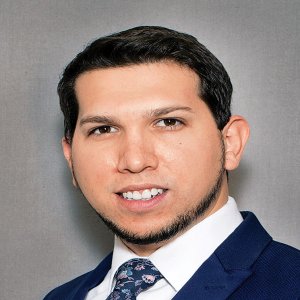Improving Performance and Health Through HVAC

STORY INLINE POST
Q: How has Mexico’s adoption of global standards for air conditioning, heating, ventilation and electromechanical installations changed after the pandemic?
A: The importance of sustainability in infrastructure cannot be understated. Buildings consume vast amounts of energy during their entire lifetime and here in Mexico, buildings tend to have a 40-year life span. For the most part, these buildings are poorly designed, meaning that their energy costs are way too high. In addition, in Mexico, there are not many preventive measures built into the design, meaning that if a part of the air conditioning system breaks, then everything must be replaced.
At IACSA & Associates, we approach the design from a holistic point of view. We have established three main pillars for sustainability: economic, social and environmental. Focusing on only one pillar will result in an ineffective system. You may have an environmentally friendly installation but you may hurt your users. We tackle all three using ASHRAE, which is the global standard for air conditioning systems.
ASHRAE systems limit the amount of energy you use for the system, while also having rooms properly set up with air filters, temperature, extraction and insertion of new air currents, as well as air quality. IACSA introduced these standards to Mexico well over 30 years ago. Since then, all HVAC systems have been designed under those standards. This provided us a really big advantage during the pandemic because these standards are now becoming the new norm.
Q: What are the main benefits of an efficient HVAC system?
A: We tackle the “sick building” syndrome, which consists of poorly lit buildings with poor air flow and uncomfortable temperatures, as well as poorly designed office distribution. This ultimately affect a user’s sleep, performance and health.
There are studies that show that correcting this syndrome allows workers to reach their peak performance. If you are working in an environment free of carbon dioxide, you no longer feel tired and sleepy even after a big meal. We actively monitor the levels of carbon dioxide and the system knows when to insert fresh air. In addition, by installing lighting sensors that constantly scan the active lighting, you can dynamically increase or decrease the light, which helps to reduce eye strain. All of these improvements allow for a better workflow and optimal employee performance.
Q: Why should companies trust IACSA to meet these standards and develop HVAC projects?
A: We have worked with commercial, residential, industrial and office clients, so we have a wide range of experience across the field. Many of our clients are foreign companies that have already adopted these standards in their home countries and will only invest in Mexico if their projects are certified.
Unfortunately, here in Mexico, the air conditioning systems are not always a part of the design of a building. We have had many clients come to us with a project already built, requiring that break it down and redesign certain aspects of it.
Q: What are the benefits of IACSA’s energy simulations?
A: The energy simulation helps us in two ways. One is for new projects that are still being developed and the is for existing projects. We create a 3D digital twin of the project and place it in the simulation. Once we input the data, we can determine how the building is going to behave. By using this system, we can determine how much energy a building will consume, detect the heat absorption of the crystals, as well as the temperature effect of the walls and ceilings. We even simulate the heat that computers and servers will put out. Once we have all that data, we begin to discuss the best course of action as far as design.
For already existing projects, we perform an energy audit. We use thermal cameras to detect the air flow and system quality. We then input that data into the simulation. The advantage is that we are able to detect aspects that were probably never considered before and provide solutions to our customers.
Q: What do LEED, WELL and EDGE certifications mean for clients?
A: These certifications serve as an extra selling point for our customers. Having these certifications allows our clients to increase their rent or selling price, while also being able to sell or rent them quicker. Not having these systems in place could potentially lead to a negative user experience and damaged furniture, ultimately reducing sales. Unfortunately, many operating projects today do not meet these requirements and in some extreme cases, uncertified offices could lead to workers getting asthma and other dangerous respiratory diseases. Having these certifications is becoming more of a must in the real estate business.
IACSA & Asociados is dedicated to engineering and sustainability, with more than 20 years of experience in industrial, residential and commercial buildings.








 By Lorenzo Núñez | Livestream Producer -
Fri, 12/31/2021 - 07:28
By Lorenzo Núñez | Livestream Producer -
Fri, 12/31/2021 - 07:28









